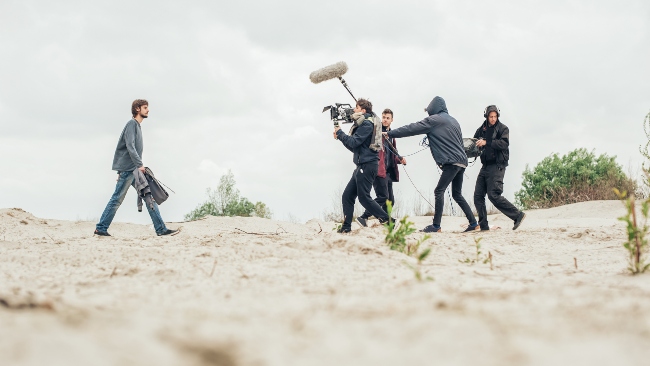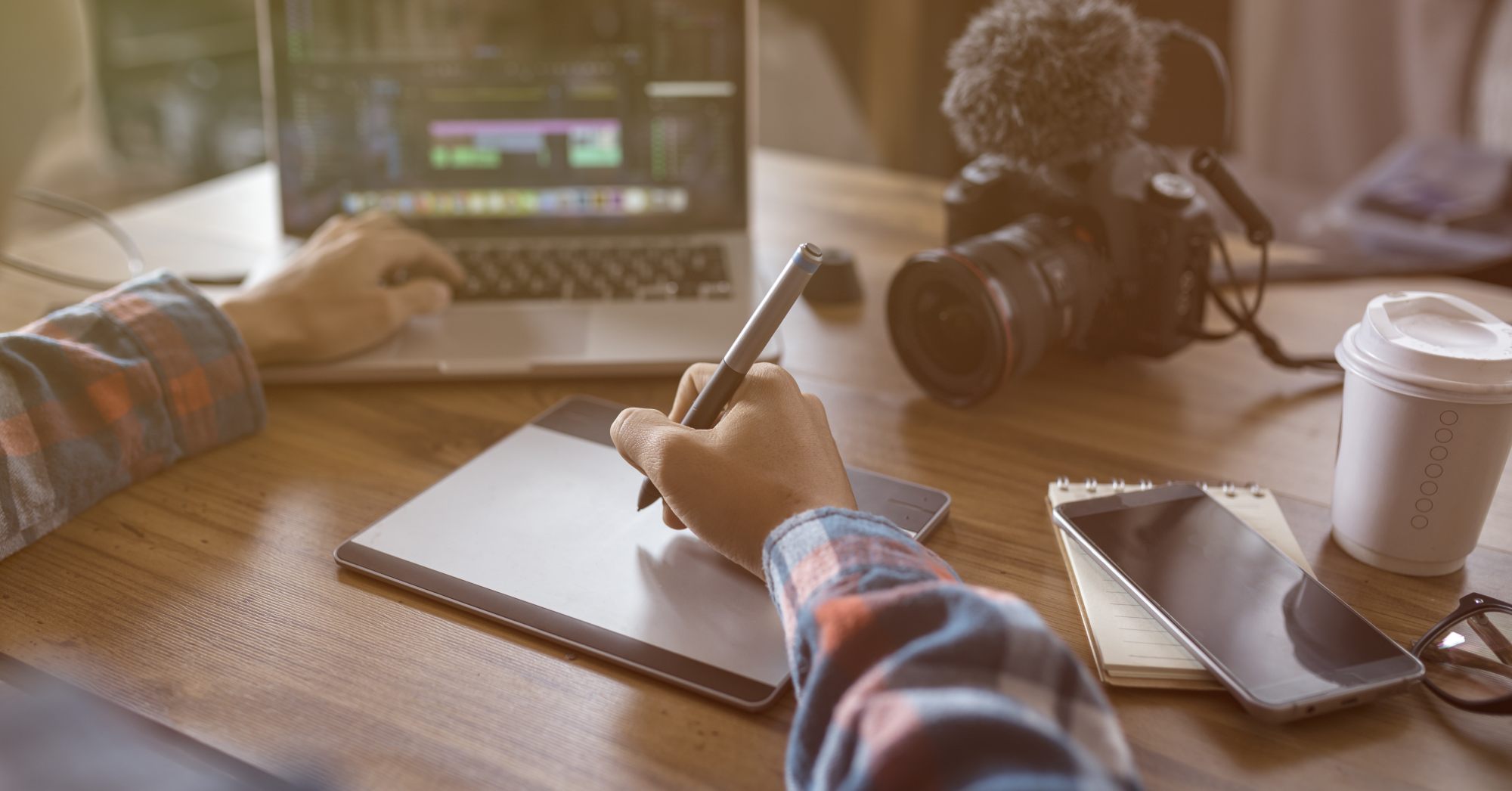Who Needs a Gaffer? The Real Members of a Video Production Team
Editor's Note: This blog was updated for accuracy and relevance on August 27, 2024. Here's a multiple-choice question for you. When a movie ends, and...
Most people aren’t used to being on camera, especially in professional settings. And when it comes to corporate videos, that pressure can grow quickly. Sometimes interviewees are expected to stick to key messages, avoid certain phrases, or represent their brand just right. That’s a lot to juggle while also trying to sound natural.
As producers, we’re not just responsible for capturing a good-looking shot or clean audio. We’re responsible for the person in that frame and how they feel when the cameras start rolling. If someone feels nervous or unsure, it will show. But with the right preparation, tone, and care, you can help people portray their best selves and even enjoy the experience.
Before you ever show up with gear, remind yourself: for many people, this is unfamiliar territory. They may be thinking about everything that could go wrong. Will they stumble over their words? Will they forget what they meant to say? Will they look stiff or awkward?
Understanding that anxiety is the first step to disarming it. Your job isn’t just to reassure them—it’s to actually make the process easier and more human. You’re not there to get a perfect performance. You’re there to help someone tell their story in a way that’s clear, comfortable, and true to who they are.
One of the simplest ways to put someone at ease is to send the interview questions or topic areas in advance. Not so they can memorize them—that’s not the goal—but so they can start thinking through their own experiences. It gives people a chance to realize, “Oh, I know this stuff. I do this every day.” That familiarity is incredibly grounding.
The act of reviewing the topics ahead of time helps shift the mindset from “I have to say the right thing” to “I’m just talking about what I know.” And when people feel ownership over the information, they’re always more confident delivering it on camera.
You don’t need to over-engineer this step. A simple email a few days before the shoot with a few high-level questions can be enough. It’s not about scripting, it’s about giving someone room to mentally prepare.
The setup phase of a shoot is one of the most underrated opportunities to help someone relax. While your crew adjusts lighting or mics, that’s your window to start building trust. Ask about their weekend. Talk about the weather. Ask how their day is going. Don’t jump straight into camera talk or performance tips. Just ease in like you would with any normal conversation.
The key here is to keep things light and human. Don’t bring up other interview subjects unless you’re being complimentary. Even subtle comparisons can make people self-conscious. If you say, “Our last subject was so nervous!” even if it’s meant to be relatable, it can trigger someone else’s anxiety.
Instead, steer the conversation toward the subject’s expertise. Ask how long they’ve been doing what they do, what they enjoy about it, or what they’re currently working on. These questions not only help them feel seen and valued, but they also subtly guide the brain toward the interview material without it feeling like rehearsal. A great producer can turn casual conversation into a warm-up lap for the actual interview.
The physical environment plays a big role in how comfortable someone feels on camera. Your lighting might be perfect, but if the person feels exposed, watched, or out of place, it’s going to impact their delivery.
Sometimes that means choosing a private, quiet room where the subject can speak without interruption. Other times, it means filming them in their natural work environment: a factory floor, an office, a kitchen—somewhere that helps them feel grounded and confident. There’s no one-size-fits-all approach here.
Pay attention to cues. Are they fidgeting in a boardroom? Suggest a more casual space. Are they looking around nervously at their coworkers? Clear the room or change locations. You’re trying to create a space that feels safe and familiar, not staged or intimidating.
Keep in mind: a “professional” setup doesn’t have to mean formal. A relaxed environment with thoughtful composition often produces far better content than a pristine setup that makes someone freeze up.
Once someone sits in the chair, it’s tempting to explain everything. Where to look, when to pause, how not to worry about mistakes. But too much direction can backfire. You want to avoid flooding their brain with instructions right before you hit record.
Instead, give them the basics, like: “You can just look at me, and we’ll keep it conversational,” and move on. Let them know they can stop and start over at any time. Reassure them that they don’t need to be perfect; they just need to be themselves.
If they get stuck mid-answer, pause and gently rephrase the question. Sometimes, a new framing or simply hearing “you’re doing great” is enough to reset their confidence.
During the interview itself, your role is to keep the energy focused on the subject, not the setup. Try to maintain eye contact, nod naturally, and respond to their answers with authentic engagement. Don’t glance down at your notes too often, and definitely don’t stare at a monitor. Your attention is what keeps the subject anchored.
When they finish a great answer, smile and affirm it. You don’t have to praise every response, but showing you’re listening and interested helps people feel like they’re doing well, which in turn helps them relax even more.
Many people worry that if they mess up, the whole thing is ruined. Part of your job is to explain, gently and confidently, that the edit has their back. Let them know you’ll cut out any stumbles, that multiple takes are totally normal, and that they don’t need to self-correct after every sentence.
When people understand that they’re not expected to get everything right the first time, and that you’re looking out for them, they stop gripping the metaphorical steering wheel so tightly. And that’s when the best interviews happen.
Being on camera is vulnerable. You’re asking someone to represent their company, their values, and sometimes even their personal story in a permanent format. That takes trust, and you have to earn it.
Producers who treat their subjects like collaborators, not content assets, always get better results. Be generous with your patience, gentle with your feedback, and intentional in your tone. The people you interview will notice—and they’ll rise to the moment.
Because when people feel safe, they open up. When they feel understood, they relax. And when they’re guided with care instead of pressure, they often surprise even themselves with how naturally they come across.
That’s when you know you’ve done your job right.

Editor's Note: This blog was updated for accuracy and relevance on August 27, 2024. Here's a multiple-choice question for you. When a movie ends, and...

Finding talented videographers today isn't difficult. Hobbyists, college graduates, and long-toothed production experts are all over job posting...

Whether you are a hobbyist or a professional, everyone who produces a video needs one simple tool: a camera. You just can not shoot a video without a...